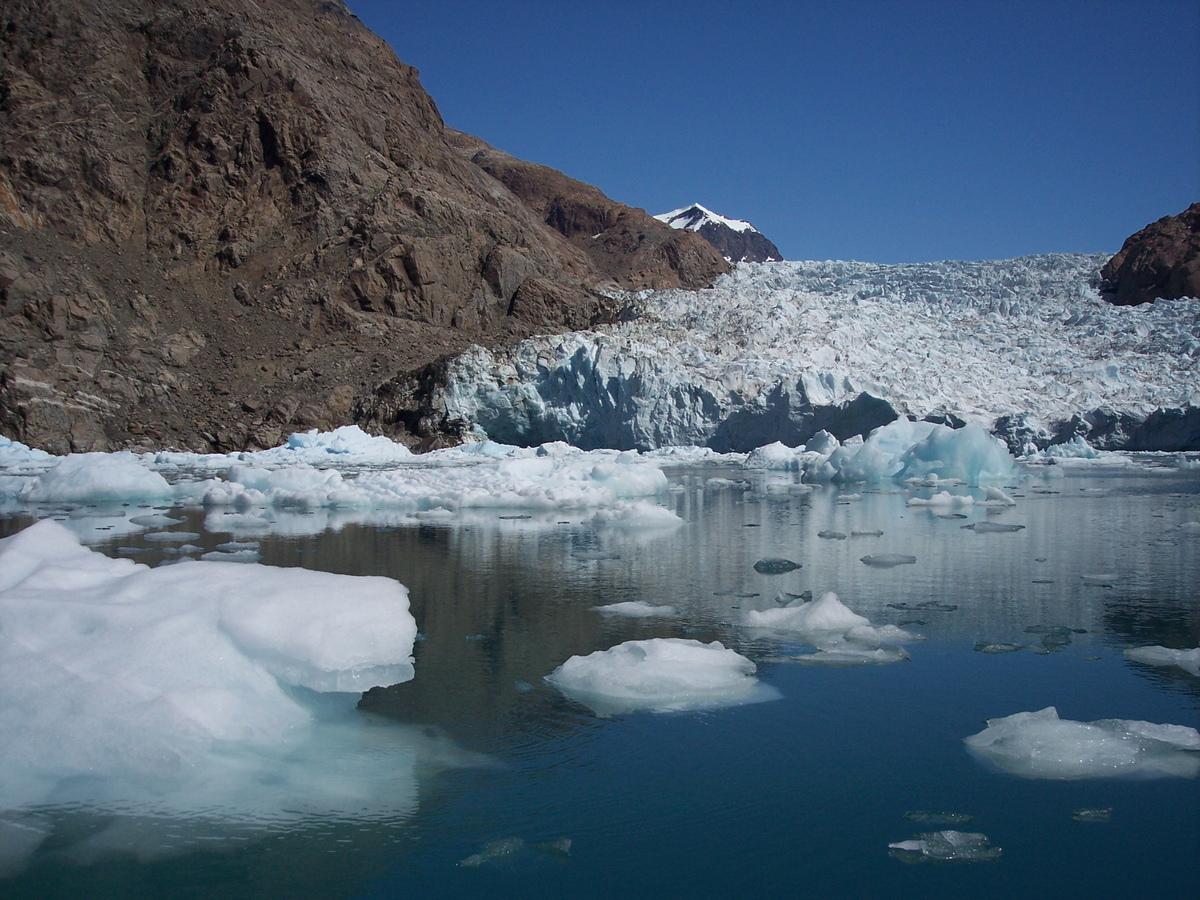Why half a degree matters so much
Snow, ice and permafrost — defining characteristics of the Arctic — are vanishing at an alarming rate. Sea ice and glaciers are melting, snow cover is thinning, and the water table is changing. As Helena Gonzales Lindberg and Grete K. Hovelsrud explain, many of the impacts of the climate crisis in the cryosphere will be irreversible if we overshoot the 1.5°C Paris Agreement goal.
In the Arctic, cryosphere changes are driven primarily by warmer air and ocean temperatures. Less snow and ice in the winter and more warm days in the summer may not seem like critical concerns in a region where many people welcome a bit of warmth. But this rapid warming is bringing new, long-lasting changes that will negatively affect human health and well-being.

A global temperature rise of 2°C instead of 1.5°C will increase the probability of ice-free Arctic summers by 10 times. Most projections show an Arctic Ocean largely free of sea ice in September — the month with the least sea ice — as soon as 2050. One recent study suggests this could happen as early as 2035.
In the Svalbard archipelago, at 74 to 81 degrees north between mainland Norway and the North Pole, people can already see the changes and their impacts: the autumn season lasts longer, winter arrives later, and sea ice in the fjords is declining drastically. More precipitation and warmer weather increase the risk of avalanches, which already cause accidents (sometimes fatal) in Svalbard regularly. More avalanches — as well as landslides and floods — will restrict snowmobile and dog sledding routes and threaten housing and infrastructure. These changes will have severe impacts on some residents’ lifestyles.
“Last-chance” tourism worsening the impacts
The cryosphere changes caused by the climate crisis are also affecting tourism, which became an industry in Svalbard in preparation for the closure of most coal mines in 2018. Ironically, “last-chance” tourism — which involves tourists travelling to the Arctic to see the loss of sea ice and melting glaciers — is contributing to the changes. This happens indirectly through greenhouse gas emissions from air travel and cruise vessels travelling to and from Svalbard as well as directly through increased local emissions, waste, wear and tear on the sites visited, and other human disturbances around the archipelago.

Less sea ice means ships have greater access to fjords in spring, which is good for tourism but creates difficult conditions for those who live in the region and travel by snowmobile. Likewise, the shorter winter extends the cruise tourism season but reduces the number of days available for skiing.
While human activities in Svalbard’s permanent settlements (mainly Longyearbyen and Barentsburg) do have an environmental footprint, tourism has a greater one: tourists outnumber residents during the high season. The Norwegian authorities have implemented strict regulations on travel for tourism, fieldwork and more in Svalbard to keep the vulnerable environment as untouched as possible. While the impacts of tourism are expected to continue to increase, at least in the short term, there are efforts to develop new and more sustainable tourism services and change the way tourism is done in Svalbard and the rest of the Arctic.
Tipping points and collaboration
The changing Arctic cryosphere and interlinked consequences for the environment and people are major causes for concern. With climate change leading to disappearing sea ice, glaciers and permafrost, humans have set in motion some irreversible shifts and significant tipping points.
Still, we are continuing our quest for solutions to address (or even reverse, in some cases) these increasingly rapid processes. Currently, we are studying three interconnected aspects of climate change as a grand challenge: adaptation, mitigation and transformation.
The adaptation aspect is fraught with challenges stemming from social tensions and conflicts over different land and resource uses. As a result, when exploring adaptation, mitigation and transformation processes, scientists and researchers must ensure that local communities, Indigenous Peoples, policy-makers and business developers are involved. That is the only way we can succeed at preventing further loss of the cryosphere and adapting to the ongoing changes.
Limiting global warming to 1.5°C by 2100 is still within reach. But urgent action is needed in the coming decades if we want to prevent the Arctic cryosphere from disappearing completely. The cryosphere is vital for many traditional ways of working, travelling and living meaningful lives in the north.
This article originally appeared in the WWF Global Arctic Programme magazine, The Circle.
Helena Gonzales Lindberg is a senior researcher, social scientist and co-lead of a work package in the EU Horizon 2020 PROVIDE project on Paris Agreement Overshooting. Grete K. Hovelsrud is a professor and Arctic anthropologist with 40 years’ experience in the Arctic. She co-leads the EU Horizon 2020 FACE-IT project.
